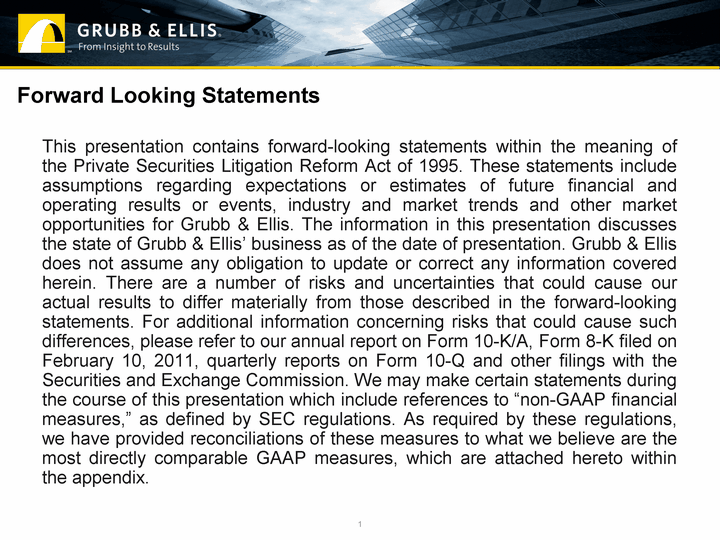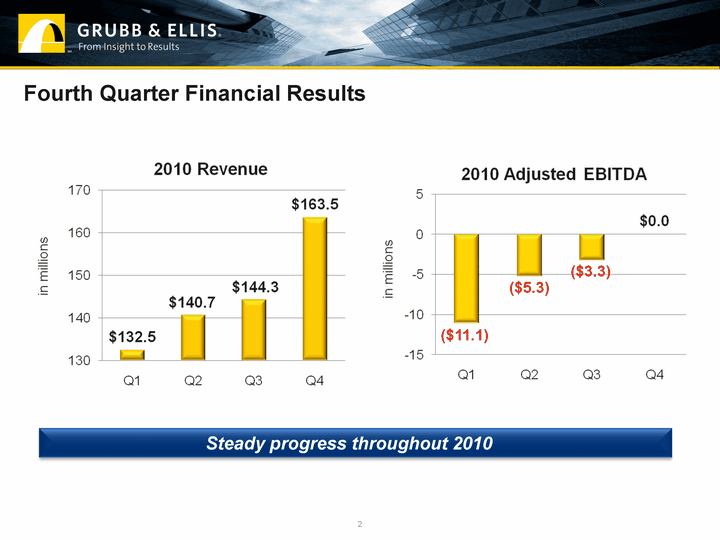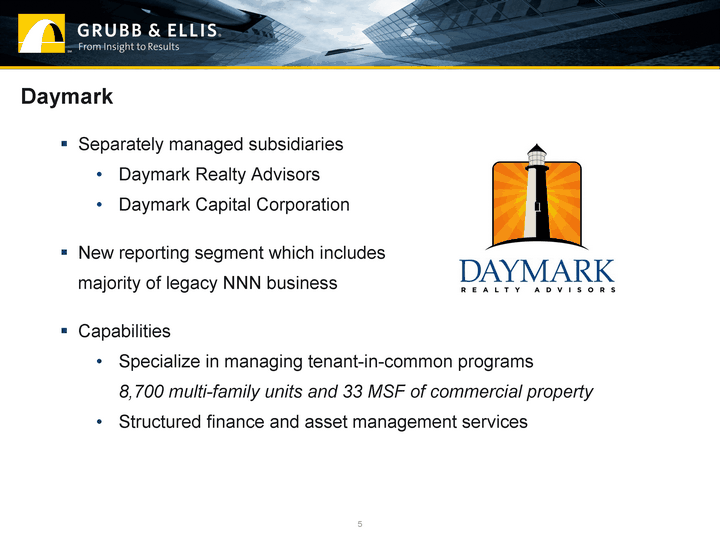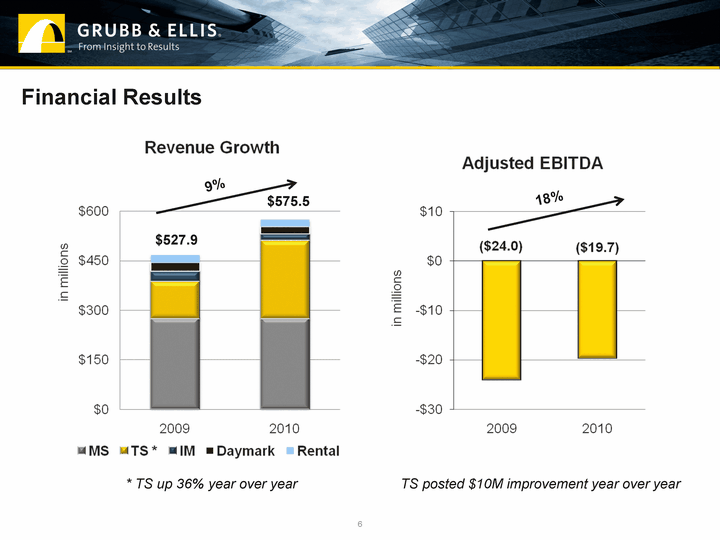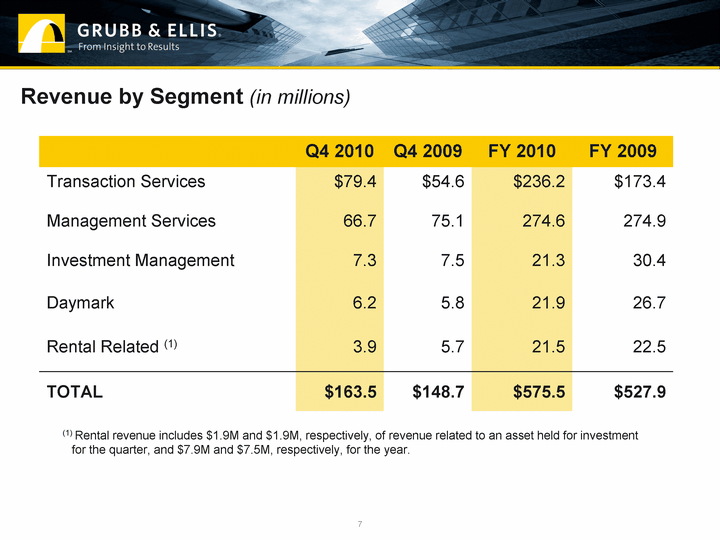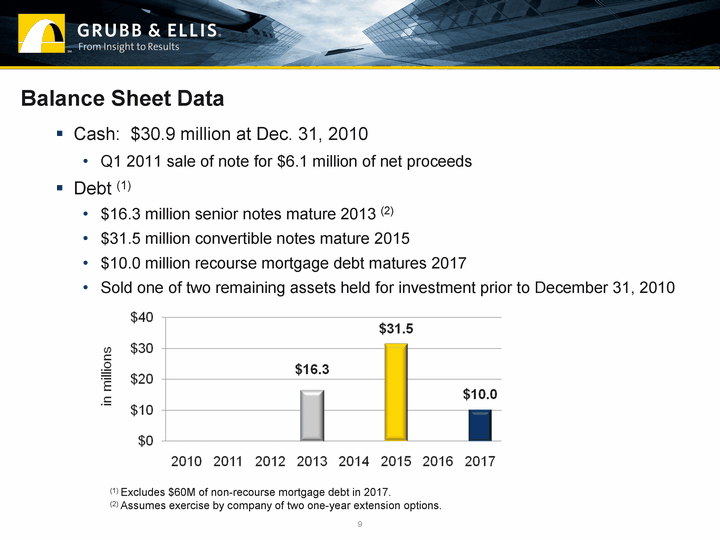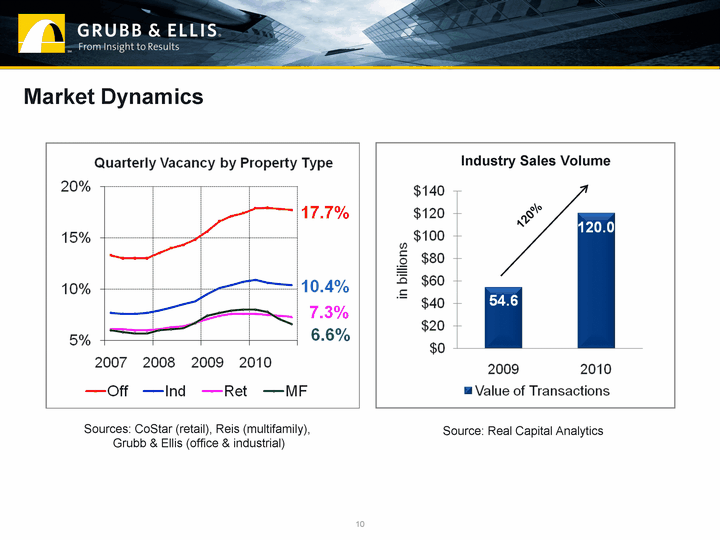| 13 Reconciliation of Net (Loss) Income to Adjusted EBITDA (in thousands) (unaudited) Three Months Ended Three Months Ended Three Months Ended Year Ended Year Ended Year Ended December 31 December 31 December 31 December 31 December 31 December 31 2010 2009 2010 2009 Net (loss) income attributable to Grubb & Ellis Company $ (10,735) $ 16,831 $ (66,780) $ (78,838) Interest expense, depreciation and amortization from discontinued operations 1,085 1,617 4,460 5,772 Interest expense 2,347 2,423 8,504 13,138 Interest income (220) (83) (428) (555) Depreciation and amortization 3,927 3,353 12,665 11,727 Taxes (577) (1,707) (78) (975) EBITDA (1) (4,173) 22,434 (41,657) (48,731) Gain related to the repayment of the credit facility, net - (21,935) - (21,935) Other discontinued operations (2,314) (5,023) (5,522) (7,948) Charges related to sponsored programs 3,464 1,744 6,530 23,348 Real estate related impairments (recoveries) (1,714) 757 859 15,305 Intangible asset impairment 792 155 2,769 738 Stock based compensation 1,721 2,144 9,147 10,876 Amortization of signing bonuses 1,779 1,831 7,058 7,535 Severance and other charges 1,345 - 5,880 - Real estate operations (858) (975) (3,805) (3,497) Other (10) (32) (913) 1,319 Adjusted EBITDA (1) $ 32 $ 1,100 $ (19,654) $ (23,990) (1) EBITDA represents earnings before net interest expense, interest income, income taxes, depreciation, amortization, discontinued operations and impairments related to intangible assets. Management believes EBITDA is useful in evaluating our performance compared to that of other companies in our industry because the calculation of EBITDA generally eliminates the effects of financing and income taxes and the accounting effects of capital spending and acquisition, which items may vary for different companies for reasons unrelated to overall operating performance. Management uses Adjusted EBITDA as an internal management measure for evaluating performance and as a significant component when measuring performance under employee incentive programs. Management considers Adjusted EBITDA an important supplemental measure of our performance and believes that it is frequently used by securities analysts, investors and other interested parties in the evaluation of companies in our industry, some of which present Adjusted EBITDA when reporting their results. Management also believes that Adjusted EBITDA is a useful tool for measuring our ability to meet its future capital expenditures and working capital requirements. EBITDA and Adjusted EBITDA are non-GAAP measures of performance. EBITDA and Adjusted EBITDA are not substitutes for GAAP net income or cash flow and do not provide a measure of our ability to fund future cash requirements. Other companies may calculate EBITDA and Adjusted EBITDA differently than we have and, therefore, EBITDA and Adjusted EBITDA have material limitations as a comparative performance measure. Furthermore, EBITDA and Adjusted EBITDA are not intended to be a measure of free cash flow for management's discretionary use, as they do not consider certain cash requirements such as tax and debt service payments. |

